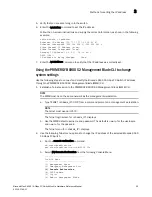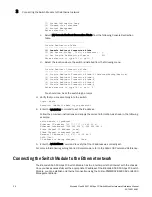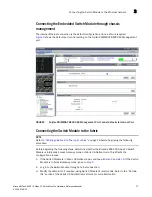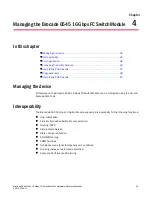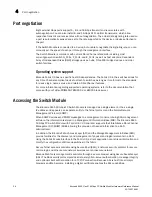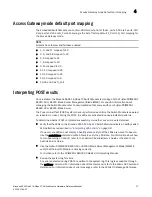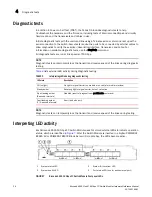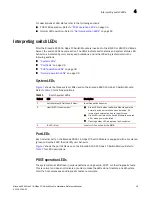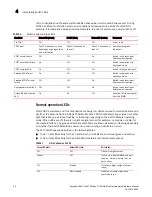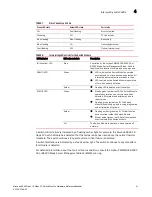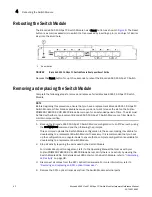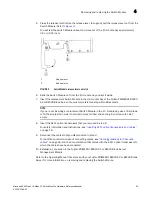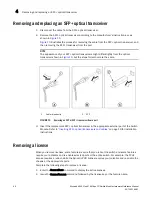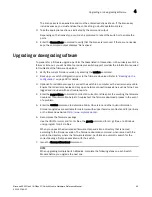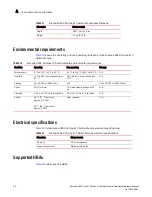
36
Brocade 6545 Gen5 16-Gbps FC Switch Module Hardware Reference Manual
53-1003184-01
Port negotiation
4
Port negotiation
Eight external Gbps ports support 4-, 8- and 16-Gbps transmit and receive rates with
autonegotiation. You can also install 8- and 16-Gbps SFP+ optical transceivers, which allow
respective transmit and receive rates with autonegotiation. The actual data signaling rate used on
a port is automatically sensed and set to the rate supported by the device or devices attached to
the port.
If the Switch Module is connected to a device, but unable to negotiate the signaling rate, you can
manually set the speed of each port through the management interface.
The Switch Module is compliant with current Fibre Channel standards, including most
current-generation switch N_Ports, F_Ports, and E_Ports, as well as host adapters, Redundant
Array of Independent Disks (RAID) storage devices, hubs, Fibre-SCSI bridge devices, and older
switch families.
Operating system support
Brocade Fabric OS has no specific host OS dependencies. The Fabric OS in the switches allows for
any Fibre Channel-compliant device to attach to switches as long as it conforms to the standards
for device login, name service, and related Fibre Channel features.
For more information regarding supported operating systems, refer to the documentation that
comes with your Fujitsu PRIMERGY BX900 S2 or BX400 blade server.
Accessing the Switch Module
The Brocade 6545 16 Gbps FC Switch Module is managed as a single element. It has a single
IP address and appears as a separate entity to the Telnet protocol and the Simple Network
Management Protocol (SNMP).
When SNMP devices send SNMP messages to a management console running SAN management
software, the information is stored in a Management Information Base (MIB). The Brocade 6545
16 Gbps FC Switch Module with Fabric OS 7.2.0 and later supports the FibreAlliance Fibre Channel
Management (FCMGMT) MIBs, allowing the provision of needed information to a SAN
administrator.
In addition, the Brocade Fabric Access Layer (API) and the Storage Management Initiative (SMI)
provide facilities for the discovery and management of physical and logical elements in a SAN.
Using the Fabric Access interface to the Fabric OS, a client application can retrieve information and
modify the configuration of Brocade switches in the fabric.
Secure Telnet access is available using Secure Shell (SSH), a network security protocol for secure
remote login and other secure network services over an insecure network.
Brocade Web Tools management is available through a secure browser using Secure Sockets Layer
(SSL). The SSL security protocol provides data encryption, server authentication, message integrity,
and optional client authentication for a TCP/IP connection. Because SSL is built into all major
browsers and Web servers, installing a digital certificate enables the SSL capabilities.




